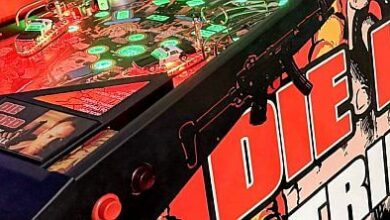The word “Pokemon” will probably still send a shiver down the spine of any school teachers in the late nineties and early noughts – when the craze became so troublingly popular it was reportedly banned in some schools.
Article by Jack Ford
There was, of course, all manner of merchandise, but the worst offender in the classrooms would probably have been the cards. If you were a youngster at the time you would have brought the first of the 27 billion Pokemon cards sold today and swapped them obsessively in the playground – but how long was it before you realised there was actually a game that could be played with them?It was all about trying to get hold of the rarest and shiniest ones, the game itself was secondary. Still, the popularity of the cards saw the release of a Game Boy Colour game based on them in 1998, and whether or not you have ever played the Pokemon card game before, it’s a great digital translation – even down to the illustrations, which are exact replicas of the ones on the cards. More importantly, though, it’s accessible to anyone, regardless of their Poke-knowledge.
For the uninitiated, playing Pokemon: Trading Card Game is the same as a standard Pokemon battle, except here it is called dueling. Similar also is the set-up of the game: you play as a young trainer whose ultimate goal is to become a card grand master. Instead of battling with the little monsters, though, you battle with cards.
To face the other grand masters and become one yourself, first you have to win eight gym badges, that old staple of Pokemon games. To do so you first have to battle and defeat all gym members, before taking on and beating the gym leader.
There are some notable differences between Pokemon battles and PTCG’s duels: Pokemon can only attack once the right number of energy cards have been attached to it and moves work every turn, except for some where you have to flip a coin to decide if they will happen. If one player runs out of active Pokemon the duel is over. You play for a number of prizes (your opponents cards) and victory earns you a fresh pack of cards.
The cards you earn from winning duels you can use to either add to the game’s standard deck or to build your own. Allowing players to create their own decks is one of the best aspect of PTCG, allowing you to go as deep into it as you want. Another feature that works well is the ability to link consoles to duel with friends and trade cards – useful as some cards can only be collected this way. The game is not without its faults, though: there’s nothing that keeps track of which characters you have already beaten, there are some abrupt and sharp difficulty curves and some of the time it’s down to what cards you are drawn rather than how well you can play the game. Purists could also argue that this is a more simplistic, straightforward version of Pokemon, with no exploration and characters limited to the same attacks.
While there is some truth to that, the upside is that it eliminates the long times spent battling your Pokemon just to get them to higher levels. If trying to evolve your Pokemon was part of the game you found frustrating, this is a great alternative. Even with its flaws, PTCG is a surprisingly effective and enjoyable game with plenty of depth. As a stripped-down version of the traditional Pokemon format, and one that re-creates the game it is based on perfectly, it is a great success. Whether you still fondly remember the early days of Pokemon, a devotee of the franchise or anything outside of those, this is worth seeking out.





![RetroArch Starter Guide [2025] RetroArch Starter Guide [2025]](https://i.ytimg.com/vi/PwJEIYZXLgw/maxresdefault.jpg)